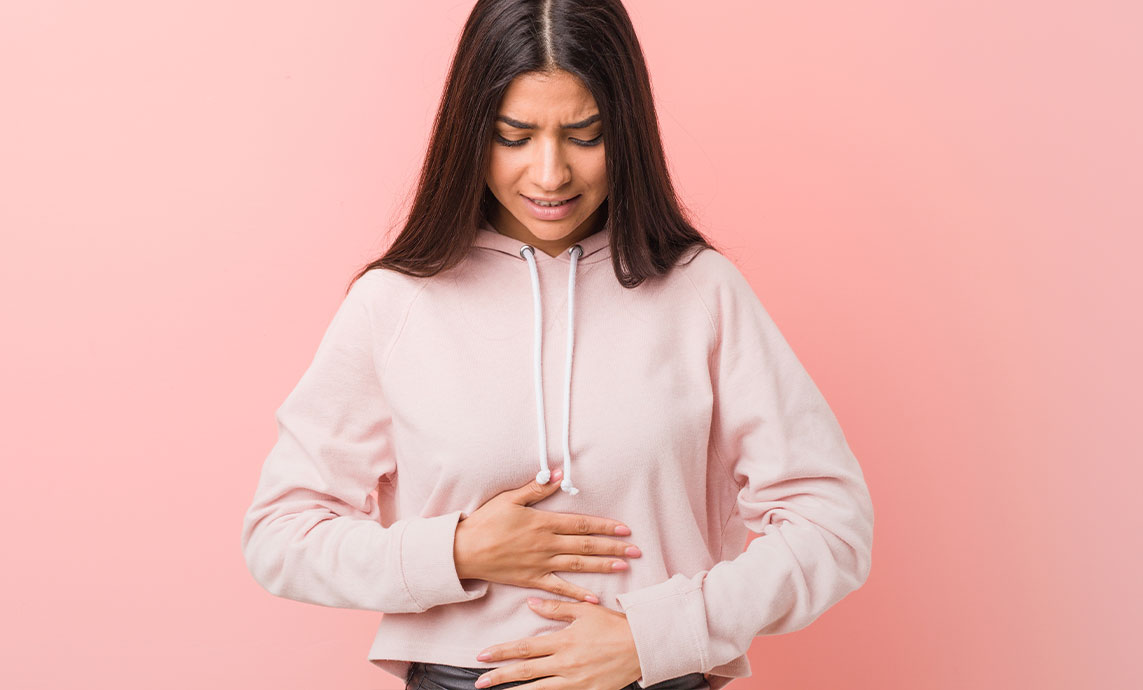Discover key facts about PMS, from how long it lasts and what causes it to common symptoms and 4 tools for PMS relief.
From movies and TV shows to pop culture, PMS has become a catch-all phrase for bad moods and cramps around the time women get their period. But PMS or Premenstrual Syndrome can involve a lot more than that.
Research has found that as many as 90% of women experience some premenstrual symptoms. But only about 20-40% experience PMS. Another 2-8% experience a more severe version of PMS called premenstrual dysphoric disorder (PMDD).
So if you’ve experienced PMS symptoms, know that you’re far from alone. In fact, you’re in the majority! The truth is that PMS symptoms are normal signs that your body’s fertility system is working healthily.
In this article, we’ll guide you through all the basics of PMS that you need to know.
Including:
- What is PMS (Premenstrual Syndrome)?
- When does PMS start and how long does it last?
- What causes PMS symptoms?
- What are the symptoms of PMS?
- 4 top tools to relieve PMS symptoms
What is PMS (Premenstrual Syndrome)?
PMS involves a collection of emotional, mental, and physical symptoms that occur before and during your period.
When does premenstrual syndrome start and how long does it last?
Most people think PMS symptoms start when your period starts. But in reality, they actually can start as early as 1-2 weeks (luteal phase) before menstrual bleeding. For most who experience PMS though, symptoms typically occur about 5 days before you get your period and last another 4 days once your period arrives.
What causes PMS symptoms?
Although the exact cause of PMS symptoms is unclear, researchers believe they’re related to shifting hormone levels that happen across our menstrual cycles. But let’s break this down a little bit more.
PMS symptoms often start in the 2nd week of the luteal phase, which takes place right after ovulation. If the egg isn’t fertilized during ovulation, levels of hormones that had previously risen to support pregnancy, like estrogen, LSH, and FSH, begin to decline. Experts believe this hormone drop may contribute to the symptoms we connect with PMS.
What are the most common premenstrual syndrome symptoms?
As we mentioned earlier, most women experience at least one or two symptoms of PMS. If you don’t experience any symptoms, that’s entirely normal too!
It’s important to remember that in the first 2 years, your period (and its PMS symptoms) may change from month to month. Over time though, you’ll likely spot patterns in how your body typically responds during your menstrual cycle.
Mental and emotional PMS symptoms can include:
- Mood swings
- Food cravings
- Crying more often
- Trouble focusing
- Bursts of energy
- Feeling exhausted
- Depression and anxiety
- Feeling more angry or ready to fight
- Apathy, caring less about things that usually excite you
- Sleep issues (difficulty falling asleep, night sweats, midnight wake-ups)
Physical symptoms of PMS can include:
- Acne
- Greasy hair
- Toothaches
- Abdominal bloating
- Weight gain from fluid retention
- Appetite changes
- Diarrhea or constipation
- Swelling and hypersensitivity in breasts
- Cramps in legs, thighs, belly, and lower back
- Spikes in temperature, feeling hotter than usual
- Vaginal sensitivity, labia sensitivity, and uterus aching — yet another reason pads are better than tampons!
Premenstrual Dysphoric Disorder Symptoms
PMDD shares many of the same potential symptoms as PMS. The main difference is its severity. PMDD symptoms are severe, significantly impacting one’s ability to get through the day.
Experts are unsure why some women experience PMDD while others don’t. However, they suggest it could be the result of increased sensitivity to hormone changes and genetics.
If your PMS symptoms are getting in the way of school, your relationships, and your ability to function, you may want to talk to your doctor about whether you could be struggling with PMDD.
4 Core Tips to Find Relief from PMS Symptoms
If you’re struggling, know that there are many ways to reduce symptoms. Here’s a short list of the 4 basics of PMS relief you can try!
- Eat a balanced diet
Your diet is one of the biggest tools you have in your control to manage your hormone levels, and with them, your PMS symptoms. Aim for a diet filled with fruits, vegetables, lean proteins, healthy fats, and whole grains. You can also try eating six smaller meals throughout the day instead of 3 larger meals to keep your blood sugar stable.
- Make time for daily movement
How do you like to move your body? Whether that’s going for walks, hitting the weight room, swimming, dancing, running, or playing a team sport — regular movement is great for keeping hormones in a healthy balance. Try to hit 30 minutes a day, about 5 days a week.
- Don’t skip out on your Zzz’s
Sleep is one of the most overlooked but important parts of your health. Teens and tweens should be aiming for between 8-10 hours a night. If school starts at 8 am and you need to be up by 7 am, then you want to go to bed around 10 pm, to give yourself extra time to fall asleep.
- Take your stress seriously
Stress is more than a feeling — it actually takes a real toll on your body! And the way it does that is by messing with your hormones. So it’s important to take stress seriously and prioritize activities that help you feel relaxed. That could look like journaling, listening to your favorite music, meditating, yoga, creating art, dancing, and much more. Experiment with different activities to find what relaxes you most.
